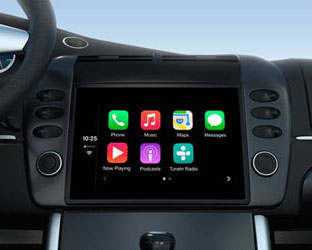The buzz around the vehicles of tomorrow intensifies.
Yet, uncertainty swirls around the consumer and their readiness for an influx of technology in their automobile.
A new report from PwC, “Driving the future: understanding the new automotive consumer,” takes a closer look at in-car technology, and what is top-of-mind for motorists.
Part of the PwC’s Consumer Intelligence Series, the newly released report gauges sentiment from nearly 1,600 consumers via a survey, focus groups, social listening, and interviews with industry experts.
Among the key findings broadcast media may find of interst:
- Practical benefits override the “cool factor.”
- Luxury and established car brands are more trusted than tech brands, though a pairing of the two seems to be customers’ ideal.
- Mindset matters more than a customer’s age when adopting automotive technology. Auto tech is of more interest to Gen X (ages 35-49) and Gen Y, (ages 21-34) than to Gen Z (ages 16-20) — counter to adoption of other (less costly) technologies.
Specifically discussing in-car technology, PwC finds that 61% of consumers want their cars to be more integrated with their smartphones.
“During focus groups, more than one participant expressed a desire for an Apple ‘iCar,’” the report notes.
PwC also cites Richard Otto of Faraday Future, who envisions the car becoming an extension of the user, “connected to different parts of their daily lives.”
He says, “When a user wakes up in the morning for work, Faraday Future’s connected car has already checked traffic conditions and sent a message to the user’s phone warning of any traffic issues, has planned the best alternate route, presets the vehicle to your personal preferences for music, seat position, climate control, etc.”
Cars may even someday be able to monitor driver health and convey vital statistics to a health care provider.
Interestingly, there was not a large discussion of the next-generation dashboard media system, and of access to music, or radio, or video.
But with integration to smartphones a desire, this presents opportunities for media companies to follow the lead of iHeartMedia, which has become one of the first brands to join the new “OnStar Go” platform offered by General Motors in a partnership with IBM Watson technologies.
How much consumers might want a new feature did not always align with a willingness to pay for it.
Some features, like active window display and augmented reality, did not score high in desire. But those interested in such options expressed a willingness to pay more for them.
“Smartphone integration emerged as a feature that consumers expect to come with a vehicle, without the need to pay more for it,” PwC notes. “But, consumers would open their wallets for options like remote vehicle shutdown and comprehensive vehicle tracking. However, this does not delineate a consumer’s option to pay more for autonomous vehicles … It’s also worth noting that—while we didn’t ask about it in our quantitative study—in our focus groups, consumers expressed a near universal desire for in-car WiFi.”
In a phone interview with Glen Weyl, a Senior Researcher at Microsoft Research New York, he told PwC, ““We are really just at the beginning of what is possible in terms of the market for transportation services. In the future, firms will be able to offer prices that respond to so much more than just how much demand there is for services. They will be able to charge for the wear and tear you put on a car; they will be able to advise you as to the cheapest and easiest times to commute; and they will offer you a type of car suited to your needs (working, going out on a date) at the time you demand it. Yet, this is just what the companies will offer themselves; at least as long as it’s important to the individuals and governments who will adapt to these changes.
“For example, individuals may eventually come to find commuting so cheap and easy that vehicle transit will become an office space in the way that trains have for many commuters. This, in turn, will transform the shape of cities: As more people commute in cars that do not need to be parked downtown, huge areas of land will be freed up for other uses. Thus, the biggest changes we have coming are not those that directly flow from technology but from the social changes it will enable.”
How radio stations adapt to this is ripe for discussion. It could be uniquely addressed, market by market. Future Radio Show sessions could be devoted entirely to the evolving in-car motorist, as well as the in-car dash and radio’s presence and access.
With autonomous cars as commonly discussed as the “connected car,” staying connected to the AM and FM stations in the one place the industry still rules will be paramount to broadcasters — and the advertisers who seek the on the road consumer.





